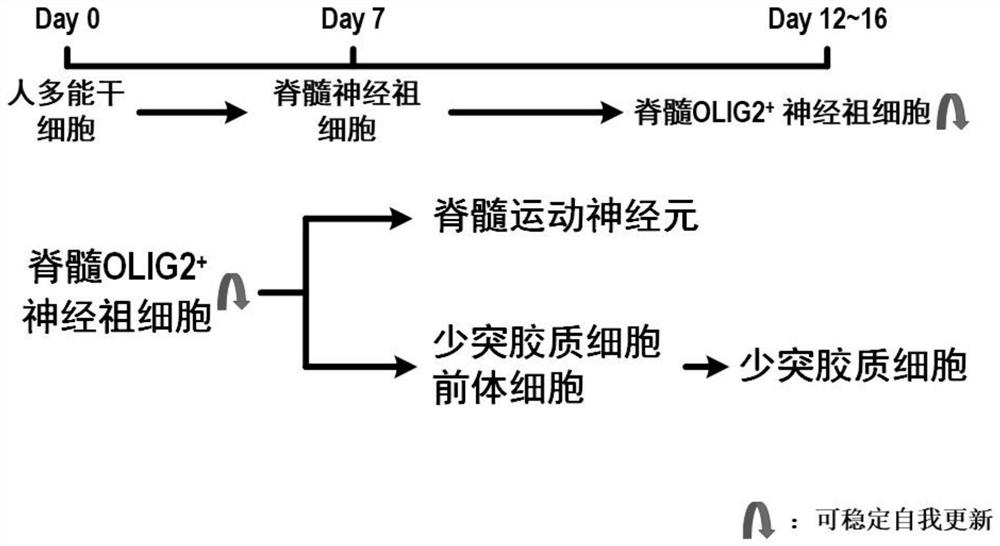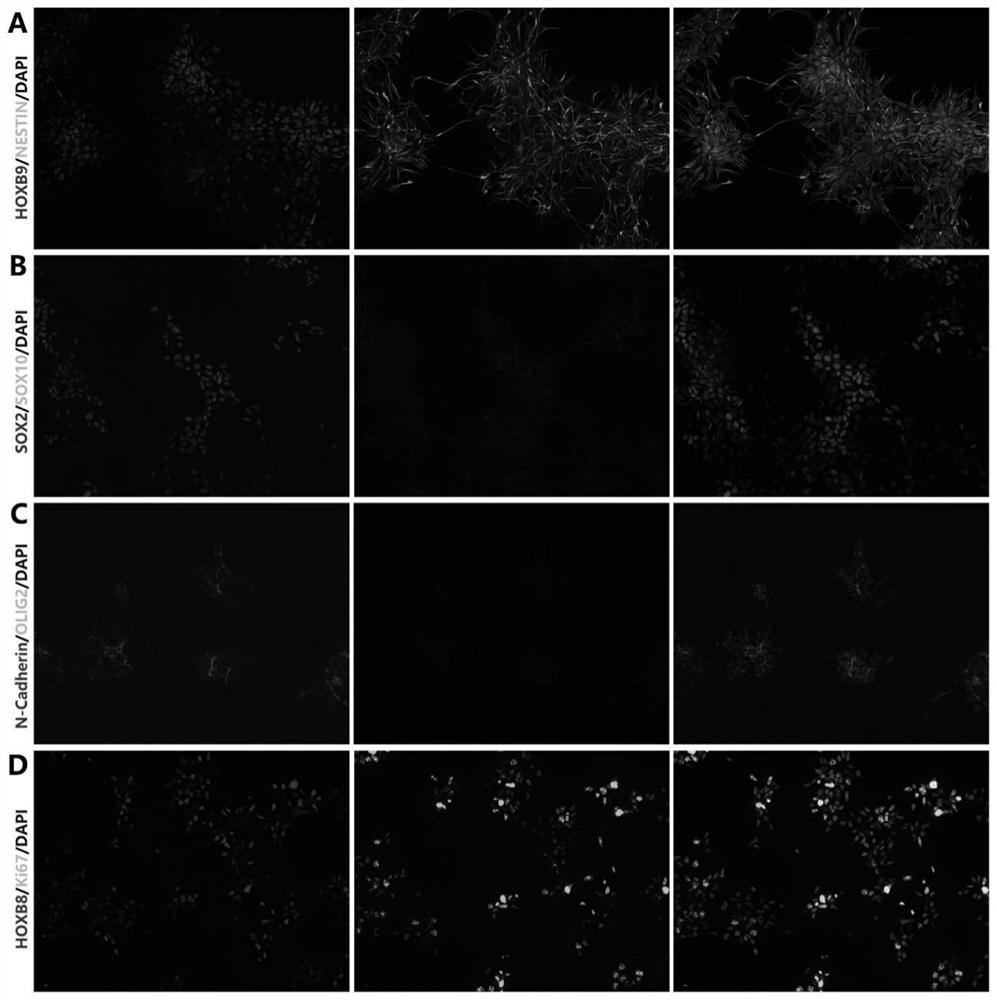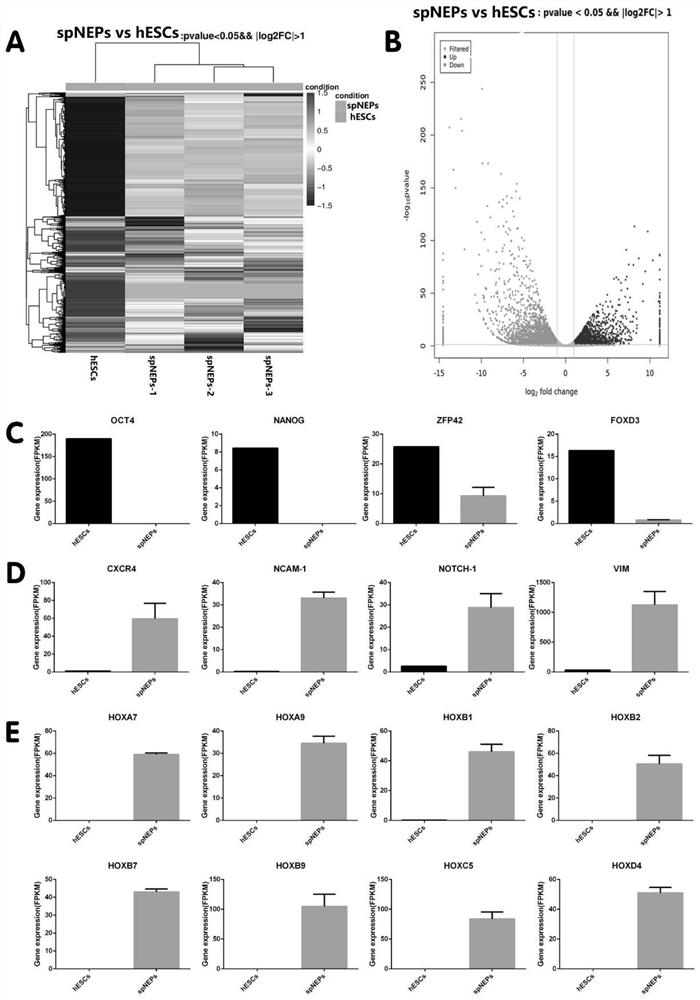Spinal cord OLIG2<+> nerve progenitor cell induction and self-renewal culture system, induction method and application
A technology of neural progenitor cells and culture system, which is applied in the field of spinal cord OLIG2+ neural progenitor cells and maintains their stable self-renewal culture system, which can solve problems such as troubles and obstacles to basic research on cell therapy.
- Summary
- Abstract
- Description
- Claims
- Application Information
AI Technical Summary
Problems solved by technology
Method used
Image
Examples
Embodiment 1
[0050] Example 1: Directed induction of human pluripotent stem cells to differentiate into spinal cord OLIG2 + neural progenitor cells and maintain their steady self-renewal
[0051] according to figure 1 , directed differentiation of human pluripotent stem cells into spinal cord OLIG2 + The neural progenitor cells are mainly divided into two steps: the first step is to induce the differentiation of human pluripotent stem cells to obtain spinal cord neural progenitor cells; the second step is to induce ventralization on the basis of the obtained spinal cord neural progenitor cells to obtain spinal cord progenitor cells. OLIG2 + neural progenitor cells.
[0052] 1. Directed induction of human pluripotent stem cells to differentiate into spinal cord neural progenitor cells
[0053] The induction and differentiation method of spinal cord neural progenitor cells is as follows: inoculate human pluripotent stem cells on a Matrigel-coated culture plate, and discard the human plur...
Embodiment 2
[0062] Example 2: Spinal cord OLIG2 + Neural progenitor cells differentiate into spinal cord motor neurons
[0063] Obtain the spinal cord OLIG2 of embodiment 1 gains + After neural progenitor cells are directed, the cells are directed to differentiate into mature spinal cord motor neurons. After induced differentiation, most of the cells have neuron morphology ( Figure 8 A). Immunofluorescent staining was performed on the obtained cells for identification, and the staining results showed that the cells were indeed neurons and had differentiated and matured ( Figure 8 B, C), while having the segmental positioning characteristics of the spinal cord ( Figure 8 C). In addition, this neuron expresses molecular markers of motor neurons and cholinergic neurons ( Figure 8 D, E).
[0064] The above results indicate that spinal cord OLIG2 + Neural progenitor cells can differentiate into mature spinal motor neurons in a relatively short period of time in vitro.
Embodiment 3
[0065] Example 3: Spinal cord OLIG2 + Neural progenitor cells differentiate into oligodendrocytes
[0066] Obtain the spinal cord OLIG2 of embodiment 1 gains + After neural progenitor cells, the cells are directed to differentiate into mature oligodendrocytes. After induction of differentiation, epithelial-like spinal cord OLIG2 + Neural progenitor cells gradually differentiated into bipolar or multipolar cells, and the cells at this stage were identified by immunofluorescence staining, and it was found that the cells expressed molecular markers of the oligodendrocyte lineage ( Figure 9 A-C), and the cells also have the ability to proliferate ( Figure 9 D), demonstrating that spinal cord OLIG2 + Neural progenitor cells and differentiate into oligodendrocyte precursor cells (OPCs). The precursor cells were planted on a laminin-coated culture plate to continue to induce their differentiation and maturation. After nearly 2 months of induction and differentiation, they were...
PUM
 Login to View More
Login to View More Abstract
Description
Claims
Application Information
 Login to View More
Login to View More - R&D
- Intellectual Property
- Life Sciences
- Materials
- Tech Scout
- Unparalleled Data Quality
- Higher Quality Content
- 60% Fewer Hallucinations
Browse by: Latest US Patents, China's latest patents, Technical Efficacy Thesaurus, Application Domain, Technology Topic, Popular Technical Reports.
© 2025 PatSnap. All rights reserved.Legal|Privacy policy|Modern Slavery Act Transparency Statement|Sitemap|About US| Contact US: help@patsnap.com



